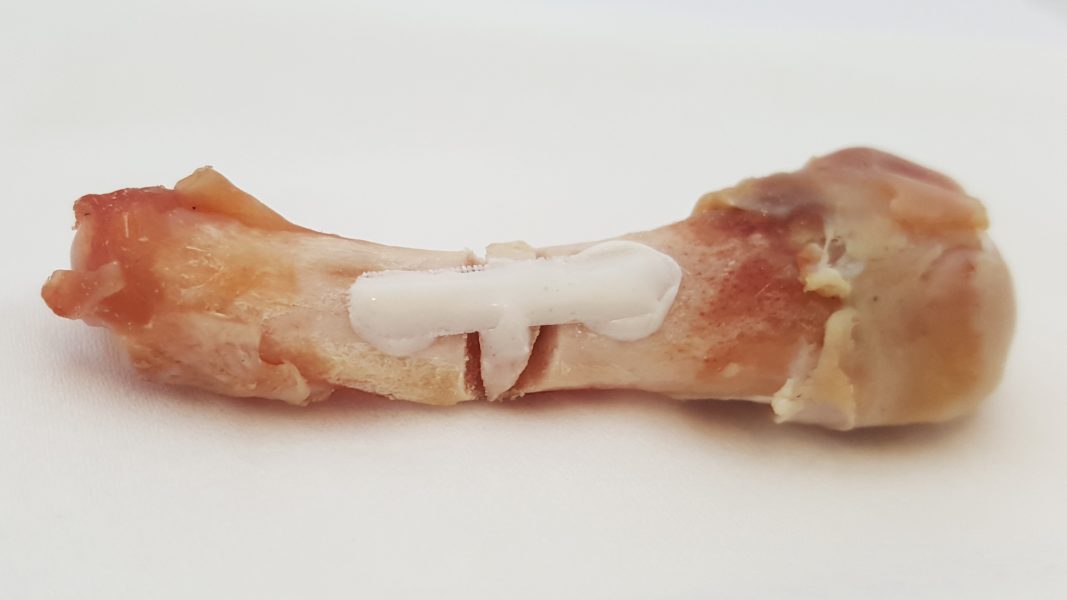Many daily tasks that require manual dexterity can become a challenge when a bone becomes fractured. To heal a fracture, medical intervention may be required. In the clinic, rigid plates or screws are sometimes needed to aid healing. Using a flexible material, however, would be more biocompatible.
In their article in Advanced Functional Materials, Professor Michael Malkoch and colleagues from the KTH Royal Institute of Technology, Karolinska Institute, and the Research Institutes of Sweden (RISE) develop a new adhesive for in vivo fracture fixation.
A thiol–ene coupling adhesive was prepared, which could be cured using high-energy visible light.
Fiber-reinforced adhesive patches (FRAPs) were fabricated on wet bone pieces using the adhesive. A primer layer was first applied to the bone surface and dried. Adhesive was then added followed by a fiber mesh, and cured by high-energy visible light. Five more layers of adhesive and mesh were added, followed by a top layer of adhesive.
The rigidity, stability, and fatigue resistance of the FRAP was assessed and compared with two clinically available fixation techniques. Cyclic loading of the structures with a force comparable to rehabilitation exercises demonstrated the superior or equal performance of FRAP.
To find out more about this new method for fracture fixation, please visit the Advanced Functional Materials homepage.

















